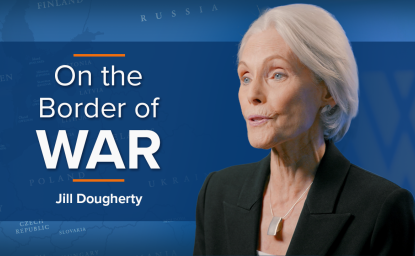The 1990s famine that killed millions of North Koreans has been the least understood humanitarian catastrophe of that decade—almost exclusively because of the extreme secrecy and defensiveness of the North Korean government. USAID Administrator Andrew S. Natsios' new book, The Great North Korean Famine, details not only how that defensiveness led to the crisis, but also the regime's cruel policies and the inadequate U.S. and international response. Natsios outlined his findings to a Wilson Center meeting that included Charles Pritchard, the current U.S. State Department Special Envoy to North Korea.
"I Didn't See A Famine At First"
Natsios said that his book was based on research and interviews he did on a June 1997 trip to North Korea while working for World Vision-USA. "I didn't see a famine at first," Natsios said. But two associates convinced him to conduct interviews with Korean refugees who were crossing the Chinese border to find food. Those interviews, along with 1600 other refugee interviews by another NGO as well as the border dispatches of South China Morning Post reporter Jasper Becker, convinced Natsios that a full-blown famine was at hand.
"All famines take place in a political context," Natsios said. "And there has been no known famine in a democracy. In a democracy, people take action long before that point. Famines take place under centralized governments precisely because information can be hidden."
What Caused the Famine?
Natsios said that an annual FAO crop assessment determined that the North Korean famine was largely caused by the country's Stalinist economic system—not by flooding, as the government still maintains. "North Korean and Cuba are the world's only Stalinist agricultural systems, where there is no incentive to produce food," said Natsios. "The production of food actually went into reverse during the famine." In addition, Russia and China had stopped sending heavily-subsidized food supplies and oil to North Korea after the end of the Cold War.
And short-term government decisions, Natsios argued, exacerbated that disaster. In 1995, the regime "triaged" the entire northeast region of the country—in essence, blocking food shipments to that portion of the population in order to ensure subsistence food supplies for the capital Pyongyang, whose support was critical to the government. "No food deliveries were made to that region for 2 ½ years," said Natsios. Workers in "unessential industries" such as mining were also triaged.
The turning point in the regime's domestic credibility, Natsios argued, was when it cut rations to farmers. "Since the prices the PDS [the public distribution system] paid farmers for food was extremely low," said Natsios, "the system collapsed when farmers began hoarding food." And since North Korean's ration-cards were only honored in the residents' hometowns, the system's breakdown led to widespread migration and corruption.
How Many Died?
The North Korean government continues to maintain that 225,000 to 235,000 people died during the famine. Natsios, however, estimated that a figure between 2.5 million and 3.5 million deaths is reasonably accurate. He said that recorded death rates in towns, cities, and regions whose records were accessible show that somewhere between 10 and 19 percent of their populations perished in the famine. Tellingly, only 55 percent of people voted in North Korea's 1998 national elections—in a country in which not voting is a crime. "Either the missing were on the move looking for food," Natsios said, "or their deaths were unrecorded."
Security and Political Consequences
Natsios said that the famine traumatized North Korean society from bottom to top. In a culture built around extended families, he said, the decisions heads of households had to make about who would and would not eat were utterly demoralizing. But the famine also undercut the North Korean government's legitimacy in a number of ways:
- North Koreans were no longer reliant on the state for food. In fact, said Natsios, the country's major source of food now is the 300 farmers' markets that sprung up across the country in the wake of the famine.
- Internal migrations of people looking for food "profoundly changed the [population's] whole view of the state," said Natsios, completely draining popular support for the regime and its policies. Also, the state switched during the famine from propaganda to massive police brutality as a means of maintaining power, further alienating the populace.
- In addition, the international food aid that eventually arrived ended North Koreans' isolation from the West and the world and debunked the myths of North Korean superiority and self-reliance.
Natsios said that he wrote the book partly as "a catharsis for [my] anger at the inaction of the United States" in the first years of the famine. By the summer of 1996, U.S. MIA-recovery teams working in North Korea had reported definitive signs of widespread hunger. But Natsios said that it took until July 11, 1997 for the State Department to first make a large food donation and use the word "famine" in describing the situation.
"We were late," said Natsios. "The food arrived after the death rate had begun to decline, although it did stabilize the situation and saved a lot of kids. The resources [in North Korea as well as Japan and the West] were always there to stop the famine."
Explore More
Browse Insights & Analysis
Combatting Cybercrime: Defending America's Security and Financial Future

Video: On the Border of War


